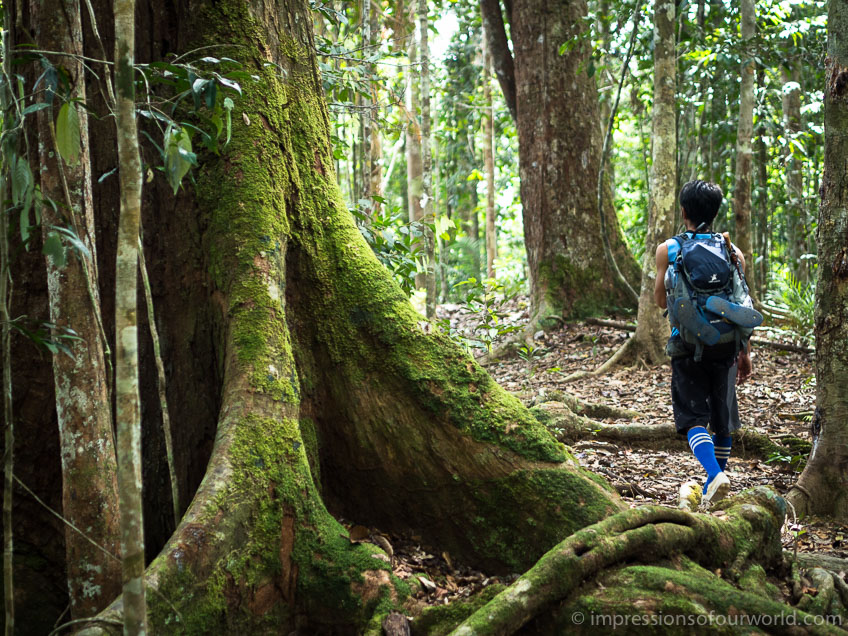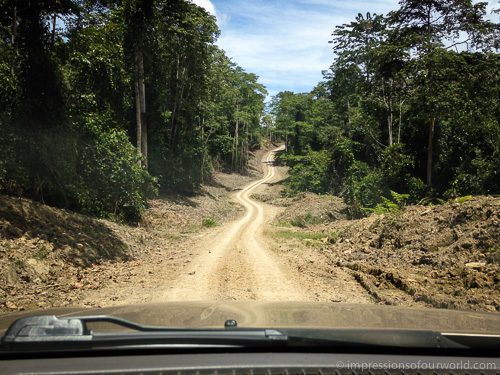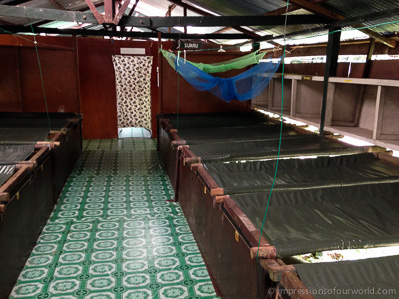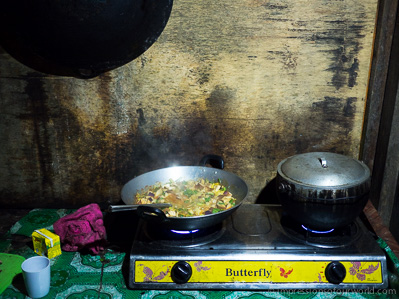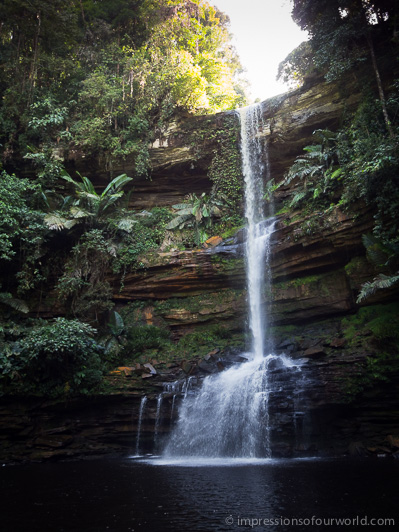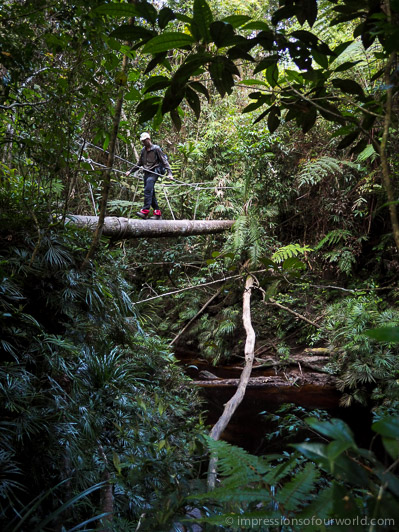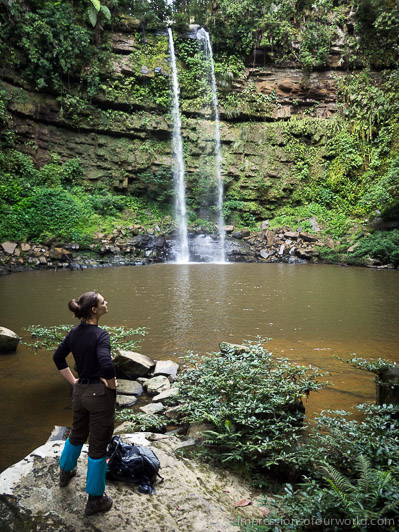Somewhere deep in Borneo’s state of Sabah, there is a hidden world that was only discovered in 1947, by a British pilot. The Maliau Basin, a remote area the size of Singapore, is covered with primary rainforest and, except where the Maliau River exits the basin, is surrounded by steep slopes (you can clearly see its shape if you zoom in on the map). It has never been inhabited and it wasn’t until the eighties that the first expedition took place. To date, only a few thousand people have set foot here, and we are so lucky to be among them.
Today, the Maliau Basin Conservation Area is a strictly protected wilderness. Trips here are deliberately cost-prohibitive, so only real nature lovers are visiting (actually, we didn’t see anyone in four days). To keep the cost reasonable, we didn’t use a trekking agency but organised our trek directly with the Maliau staff at their office in Tawau. This takes a few days but is well worth the savings. We also carried our own stuff, including food for four days, that we cooked ourselves at the camps. So the biggest costs that remained were the transport (you need a 4×4 to get into the park, at least for now) and the guide.
The first day around noon, our driver dropped us at Agathis Camp. The camp was deserted and looked like it hadn’t been used in a while. We reckoned our guide would be arriving soon, so ate our lunch and took a short nap. After two hours, however, there was still no sign of a guide. We started to worry a little. Maybe we hadn’t made ourselves sufficiently clear at the gate, as the staff didn’t understand much English. Since we didn’t fancy hiking back twenty eight kilometer on an exposed jeep track, and our cell phone was pretty useless without a signal, I decided to force my way into the camps staff room. Inside, much to my relieve, there was a UHF radio mounted against the wall. ‘Two trekkers waiting for guide in Agathis Camp, over. Two trekkers waiting for guide in Agathis Camp, over.’ After a few tries I got a creaking response, which I didn’t fully understand, but at least they knew we were here. Half an hour later we heard a jeep stopping, and met our guide Ijan.
Over the next three days we hiked approx forty-five kilometers of trails. At night we slept in basic camps, one of them built by a Camel Trophy crew in the nineties. Although pretty spartan, the camps were a luxury after a day in the jungle (and out of reach of the leeches). The trek itself was pretty strenuous, especially on day three, when we made an eleven kilometer detour to Maliau Falls. After scrabbling down a difficult, slippery trail, an impressive seven-story waterfall revealed itself, creating a rainbow where the water plunged down into a black pool. There were no other people, only the jungle surrounding us. This had to be one of the most beautiful and serene places we’d ever been in Southeast Asia. Over the course of four days, Ijan guided us to three more waterfalls: Aktob Takob, Giluk and Ginseng Falls, each one spectacular in its own way.
Maliau is home to a lot of wildlife and our guide was pretty good in spotting it. That would go like this:
Ijan: ‘Look, snake! See it?’
We: ‘Nope, where?’
Ijan: ‘There, in the tree, green snake!’
We: ‘Ehm, nope.’
Ijan: ‘In the bamboo, see it?’
We: ‘Nope.’
Ijan: ‘Oh, it’s gone now, let’s go.’
But we were able to spot quite a few other animals: sambar deer, barking deer (after hearing its terrifying scream echo through the forest a few times, we were glad it was just a deer), a few red monkeys, and civets that came sneaking around in the camp at night. Most of the time we only got a short glimpse and the animals disappeared before I could grab my camera. There’s also pygmy elephants living in Maliau, but unfortunately we didn’t see any (although we did come across their dung…). The most impressive, though, were the hornbills: giant birds sounding like electrical drones when they came zooming over. Beautiful.
Will Maliau remain a lost world forever? Probably not. The road from Tawau has already been paved two years ago and works are in progress to upgrade the access road into the basin. Staff told me this road will be paved too by the end of 2016, which will allow more people to visit as a 4×4 won’t be necessary anymore. Some even dream aloud about a nine kilometer death ride… Enjoy it while it lasts.
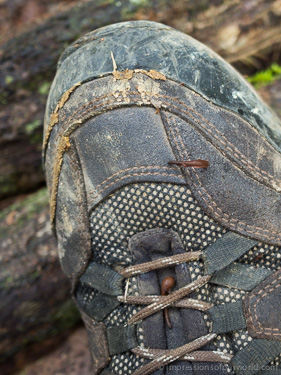
Everytime we stopped moving several leeches would attach to our shoes, trying to reach our flesh for a bloody meal. Luckily, we’d gotten ourselves a pair of leech socks which were very effective in stopping the slimy bastards.
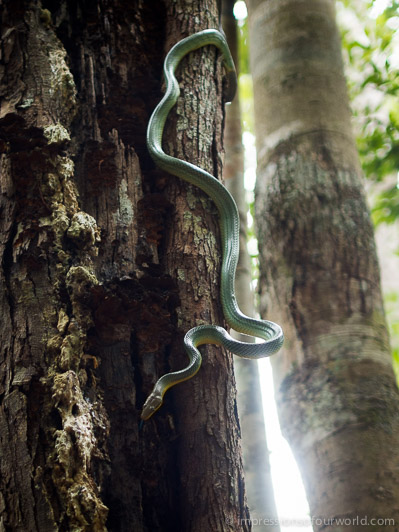
On the last day, we did spot another snake (and before our guide did). This large, venomous green viper came sneaking down on Ijan while he was sitting against a tree, having a snack. An noticed that Ijan was about to be turned into a snack himself when we were about to get moving again, and the snake had approached him to less than two metres.
